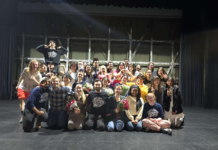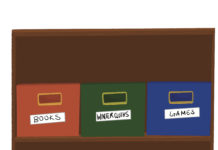With January 22nd’s deadline here, I’ve spent the past few days tying up loose ends, making sure my courses match up, and that my transcript and statement of intent are submitted. With everything coming together, I am left with a strange amount of time without paperwork to sign or meetings with the arts exchange advisor to attend. So what does one do in this span of time? Plan, of course!
Figure out what to do while there
Anyone who knows me knows that I am an obsessive planner. Give me Google Maps and I will sit there for hours planning imaginary trips from Oslo, Norway to Sighisoara, Romania, right down to where I’ll eat.
I already have an entire travel plan mapped out for Spain with my tourist “hit list” (La Tomatina… I’m coming for you!). This is the time when I suggest doing something similar; kick back with tea from the SLC’s tea shop and crack open good ol’ Google Maps.
Get a look at where you are planning on going and see what is within travelling distance, either outside the country or within. Unlike in Canada, where visiting a new culture involves driving straight down to the Bible belt or getting on an eight-hour flight, in most other places it’s pretty easy to travel for a few hours and end up somewhere completely foreign.
If you do want to travel or if you don’t and want to get an idea of what to do in the country you’ll be in, start snooping around and see how much things cost. Easyjet for people travelling to Europe is a great resource since it shows how much flights cost, and they’re ridiculously cheap. I’m talking $50 round trip, which is unheard of here in Canada. Eurail also has passes to help travel in and out of country. If you aren’t going to Europe, check out Fare Compare, Kayak and other fare comparison sites.
Trip Advisor and Lonely Planet are also godsends regardless of where you are headed, since it gives the big attractions (with reviews!) and forums where people discuss cutting costs and getting around. This helps to create a skeleton version of a budget, which is great for any type of travel — not just an exchange.
Get social
You are going to be launching yourself halfway across the world into a culture and country that you most likely haven’t spent much time in, and having friends in those countries can make all the difference. Networking sites like Couchsurfer are great for meeting like-minded people and even finding travel partners.
Even here at Waterloo we have great ways to meet people going on exchanges. Join your faculty Waterloo International Exchange Facebook page and check out who is headed where. You can post where and when you are going out, to hunt down fellow ‘Looers to tackle this experience with, or to learn more from people who have done it all before.
Also, be sure to check out the UW International and Canadian Student Network, which hosts events to help meet international students, some of whom might have come from where you’re going.
I’ll most likely get more in-depth with some other planning topics at a later date, but these are some of the easy things you can do from your computer during particularly boring lectures to get organized and psyched about travelling.
I leave you with a question: what is the number one thing on your travel “hit list”?

































